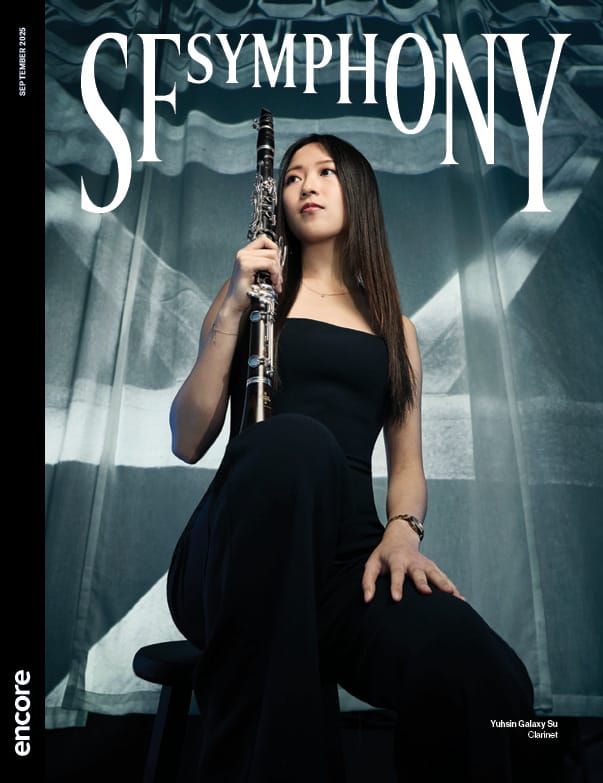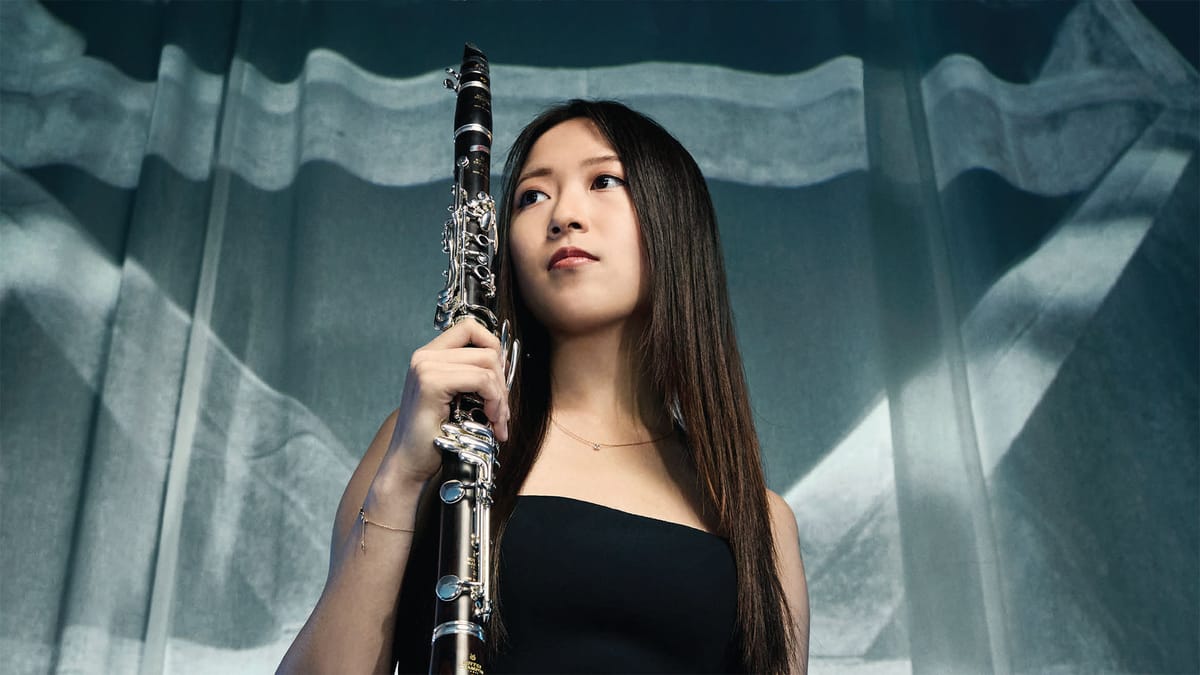In This Program
- Welcome
- New SF Symphony Musicians
- Gaïa in the Lobby
- Fabric of a City: SF Symphony Community Programs Spotlight
- Meet the SF Symphony Musicians
- Community Connections
- Print Edition
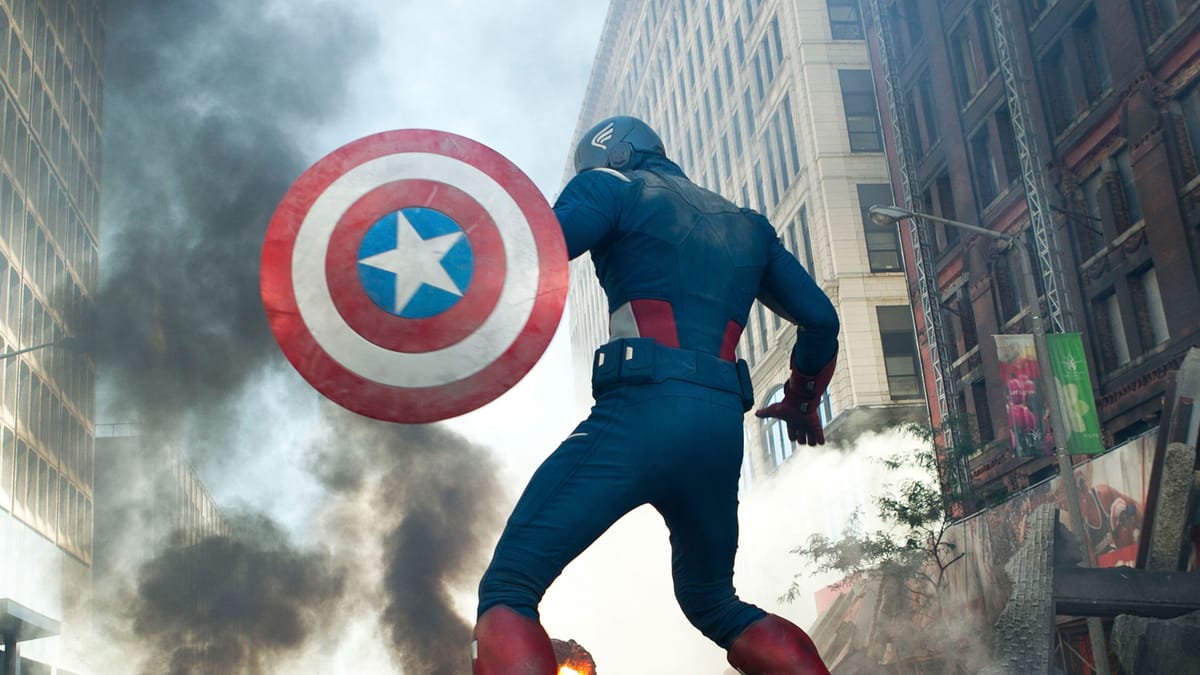
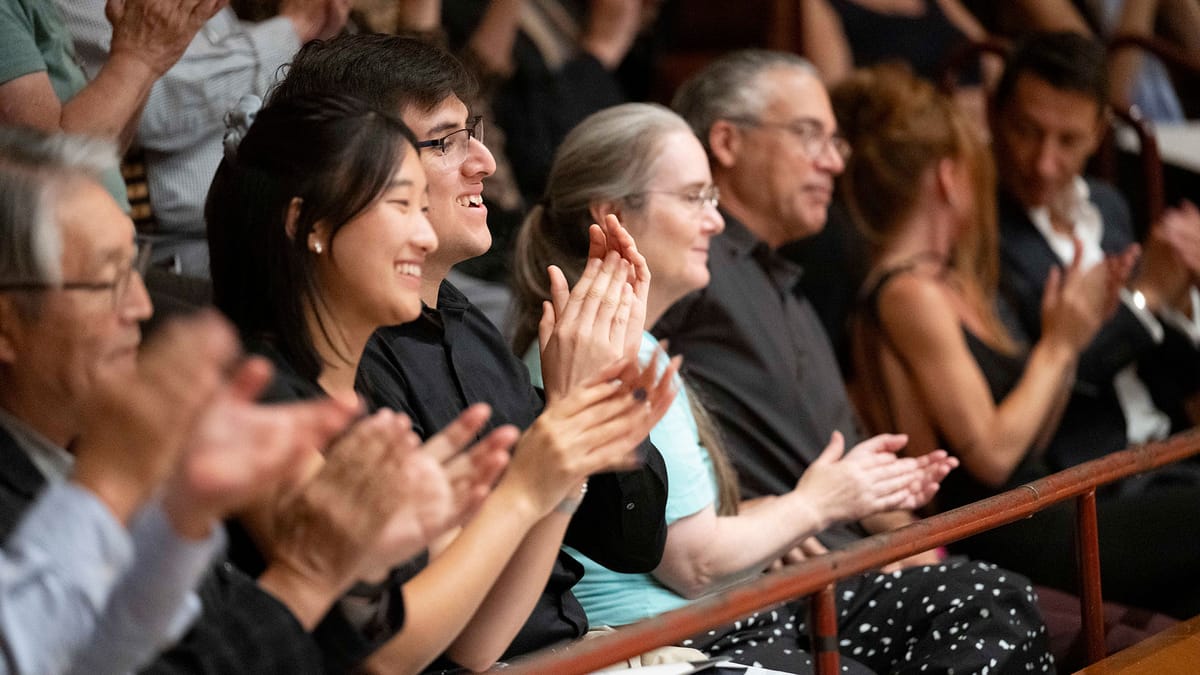

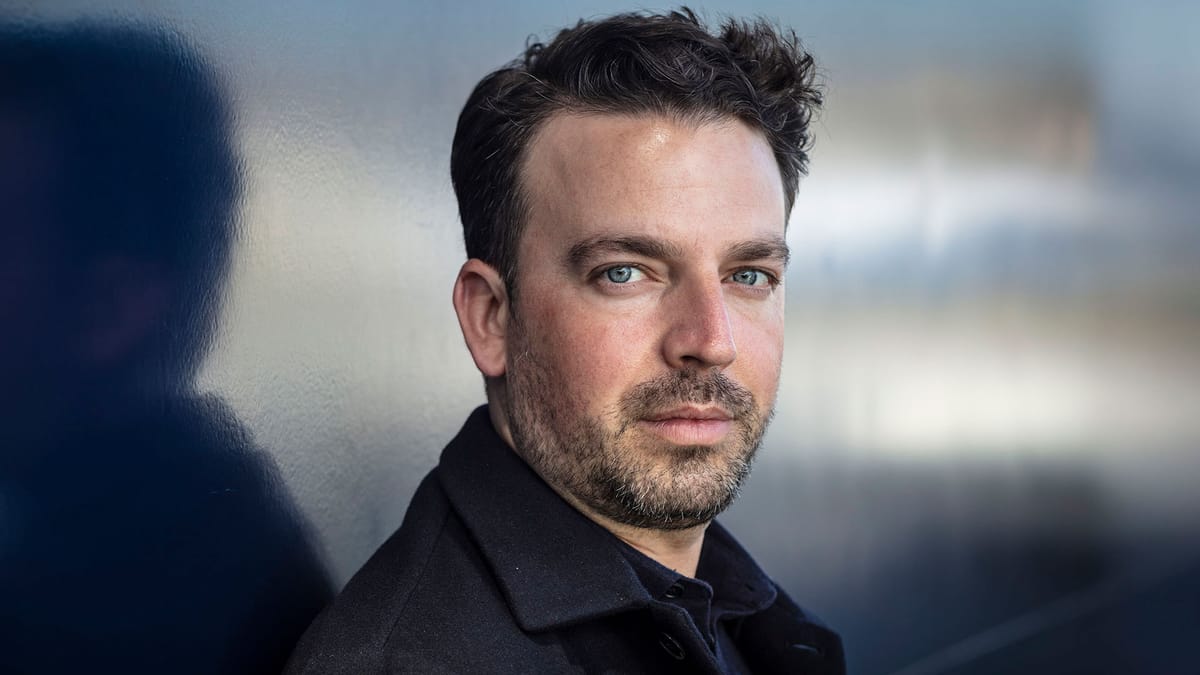
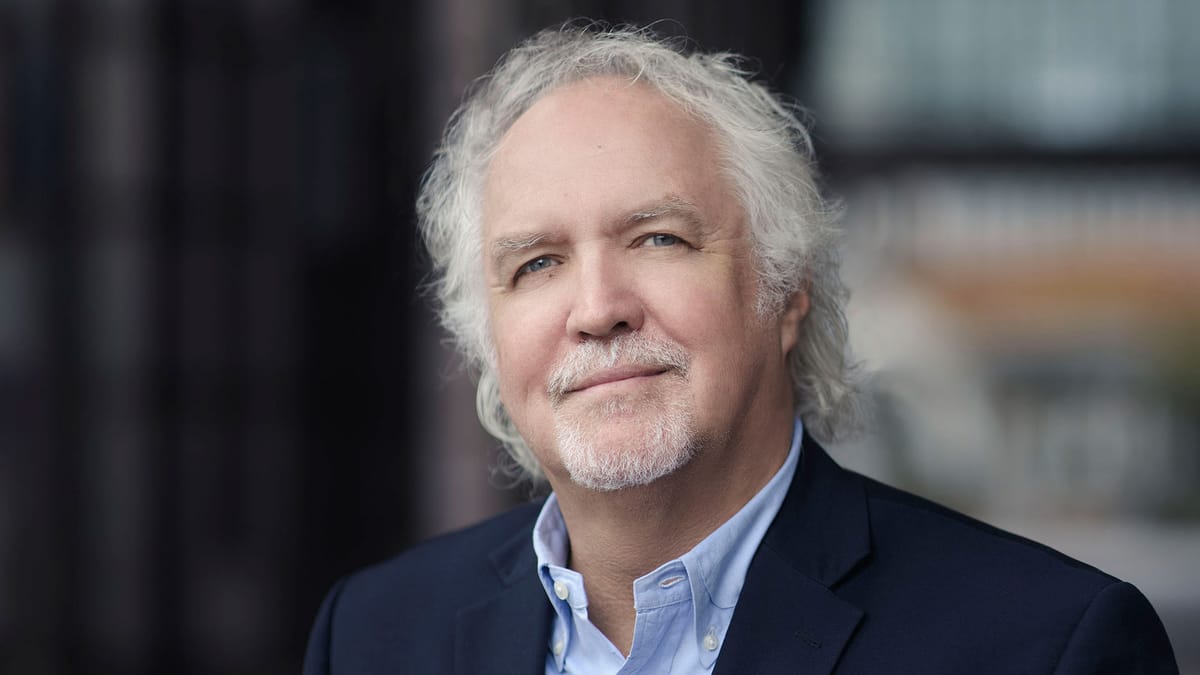

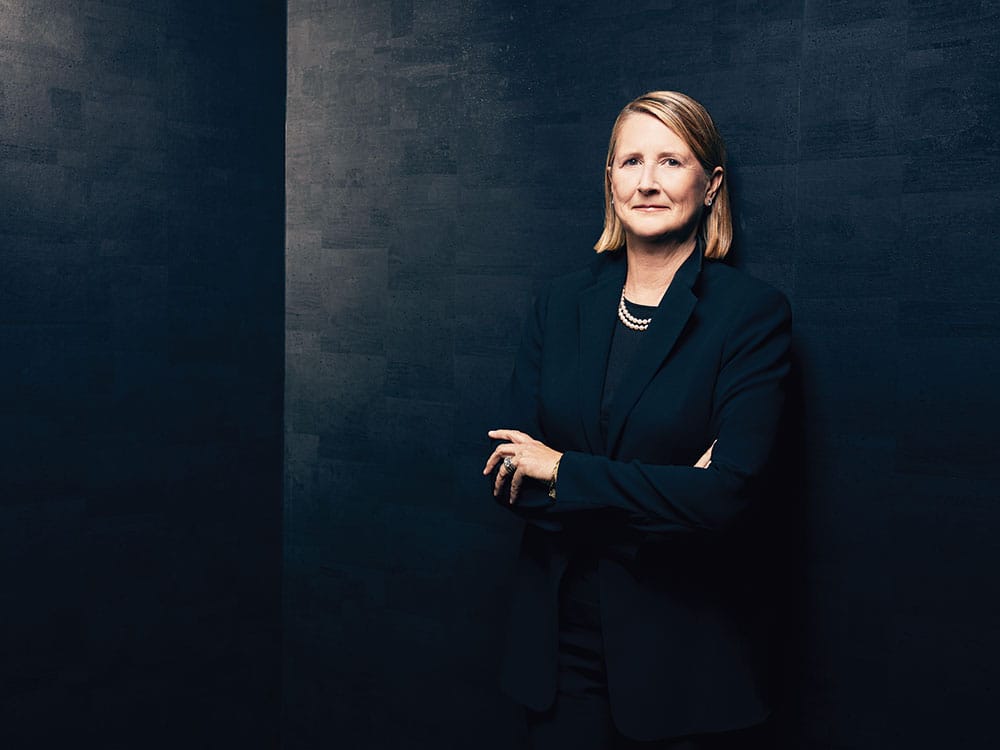
Welcome
Welcome to the San Francisco Symphony’s 2025–26 season!
As we embark on a new chapter brimming with possibility, we find ourselves in a moment of exciting transition—an opportunity to reflect boldly on who we are as an organization and where we’re headed together.
Each season, the San Francisco Symphony welcomes leading conductors and soloists from across the globe to perform for our city. But our commitment extends far beyond the concert hall. Through a range of year-round events and programs, we strive to serve, enrich, and reflect our community in ways that are dynamic, diverse, and accessible to all.
In addition to the world class concerts we perform and present each week, we partner with educators, artists, and local organizations to develop programs that serve our city’s residents, students, and families. From distributing free concert tickets to performing at public library branches, the Symphony helps open the door to meaningful musical experiences for people throughout the Bay Area. You can learn more about these efforts below.
These free programs are fully funded by the Symphony—thanks to the generosity of supporters who believe, as we do, in music’s power to strengthen lives and communities. This is a gift that we are proud to give to the city, which gives us so much in return. And just as we’ve done for more than a century, we remain committed to serving San Francisco for generations to come.
We’re honored to be part of this thriving community and grateful to all who make our work possible. If you’re inspired by the Symphony’s efforts to bring music to schools, neighborhoods, and public spaces, we invite you to support these programs. Together, we can ensure that music remains accessible to all—for this season and beyond.
Priscilla B. Geeslin
Chair, San Francisco Symphony
Welcoming New Musicians
News & Notes
Six new musicians join the San Francisco Symphony in the 2025–26 season
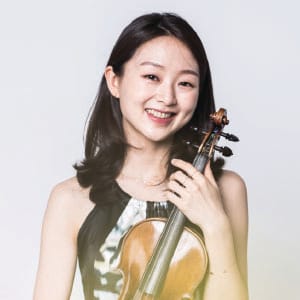
Jane (Hyeon Jin) Cho joins the San Francisco Symphony second violin section. Born in South Korea, she began violin lessons at the age of six and studied at the Yehudi Menuhin School in the United Kingdom and the University of Music and Performing Arts in Graz. She earned her bachelor’s degree from the Royal College of Music in London, her master’s at the Juilliard School under Catherine Cho, and an Artist Diploma from the Queen Elisabeth Music Chapel in Belgium. A finalist in the 2022 16th International Henryk Wieniawski Violin Competition, she also has performed as a substitute musician with the New York Philharmonic.

Sarah Chong joins the San Francisco Symphony cello section, holding the Elizabeth C. Peters Cello Chair. A Bay Area native, she began her musical studies at age nine under Jihee Kim. She has appeared as a soloist with the Prometheus Symphony Orchestra and the FilAm Music Foundation and was a prizewinner at the MTNA Competition, United States Open Music Competition, and American Fine Arts Festival Competition. Chong was the cellist in residence of Nova Linea Musica’s 2024–25 season. She received her bachelor’s degree in cello performance and a minor in psychology from Northwestern University, where she studied under Hans Jørgen Jensen and Wei Yu.

Brooks Fisher joins the San Francisco Symphony oboe section, holding the Dr. William D. Clinite Chair. He was an acting member of the San Francisco Symphony in the 2024–25 season and was previously principal oboe of Symphony San Jose. He has performed with the Cleveland Orchestra, American Ballet Theatre, Utah Symphony, National Symphony, San Francisco Opera, San Francisco Ballet, and the Houston Symphony. Fisher received degrees from Oberlin College and Conservatory and Rice University and was awarded a Professional Studies Certificate from the San Francisco Conservatory of Music, where he studied with Eugene Izotov. A native of the Bay Area, Fisher was a member of the San Francisco Symphony Youth Orchestra and coaches that ensemble today.
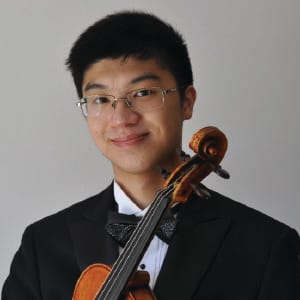
Kingston Ho joins the San Francisco Symphony’s second violin section. He recently completed a master’s degree at the Colburn School of Music, where he studied with Robert Lipsett. Previously, he earned a bachelor’s degree from Vanderbilt University, where he studied with Cornelia Heard. A native of New Jersey, Ho began playing violin at the age of five. He has served as concertmaster of the Verbier Festival Orchestra and was a fellowship recipient at the Aspen Music Festival. He was also previously a member of the New York String Orchestra Seminar and National Youth Orchestra of the USA. As a part of the Eunoia Quartet, he won first prize at the MTNA National Chamber Music Competition.
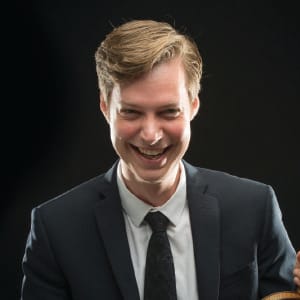
Jason Issokson joins the San Francisco Symphony as Associate Concertmaster, holding the San Francisco Symphony Foundation Chair. Concerto highlights include engagements with the Fort Worth Symphony, Aspen Concert Orchestra, Waco Symphony, Kaleidoscope Chamber Orchestra, East Texas Symphony Orchestra, Great Falls Symphony, Abilene Philharmonic, Sendai Philharmonic Orchestra, Orchestra di Teatro San Carlo, and Orchestra Internazionale d’Italiae, among others. Issokson has performed extensively in a string quartet setting, first as a founding member of the Argus Quartet and subsequently as part of the Rolston String Quartet. He has also served as a member of the Los Angeles Chamber Orchestra since 2019. He studied with Midori at the Manhattan School of Music and the University of Southern California.
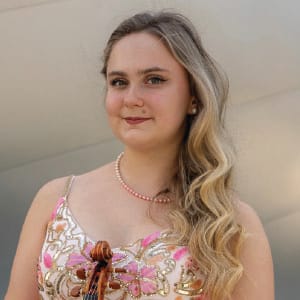
Yvette Kraft joins the first violin section of the San Francisco Symphony, holding the Isaac Stern Chair. She was the winner of both the 2024 Aspen Music Festival Violin Concerto Competition and the 2024 DeLay Fellowship Award. Internationally, she placed second at the 2020 Grumiaux International Violin Competition in Brussels, was a semi-finalist in the 2019 Louis Spohr International Violin Competition in Weimar, and was a 2023 Frances Walton Competition solo winner. She is an NPR From the Top Fellow and has soloed with numerous orchestras including the Seattle Symphony, San Francisco Ballet Orchestra, and the Spokane Symphony. She completed her studies at the Colburn Conservatory of Music, winning the 2025 Frances Rosen Prize upon graduation.

Gaïa in the Lobby
Experience a new exhibit at Davies Symphony Hall, on view through October 14, inspired by Gaïa—Gautier Capuçon’s recital program dedicated to Earth’s “beauty, fragility, and strength.”
Featuring newly commissioned works by 16 composers, Gaïa comes to life in its concert premiere with Capuçon and special guests at Davies Symphony Hall on November 16. Explore the inspirations and creative forces behind this landmark project.
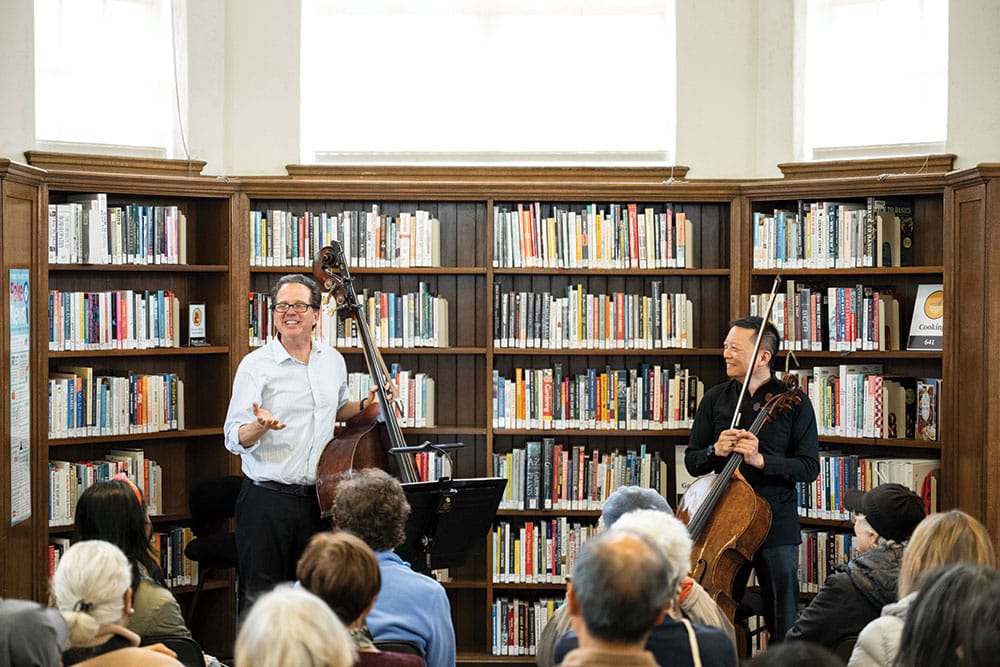
Fabric of a City
A look behind the San Francisco Symphony’s community programs | by Emma Silvers
AMOS YANG, the San Francisco Symphony’s Assistant Principal Cello, never takes it for granted that he gets to perform in Davies Symphony Hall.
Yang, who holds the Karel & Lida Urbanek Chair, grew up in San Francisco’s Richmond District—he studied at the San Francisco Conservatory of Music from the age of four, under the acclaimed cello instructor Irene Sharp—and he knows how rare it is for a musician to wind up in the world-class symphony in their own hometown. His parents come every weekend. “They’re tickled,” he says.
Still, when it comes to memorable, intimate musical experiences, nothing has come close to the performances he’s given in the city’s public libraries. Yang is one of close to 30 musicians who have performed in a San Francisco Public Library branch since 2022 as part of the Symphony’s free Community Chamber Concerts.
In doing so, he’s participating in one of three major programs that weave the Symphony into the fabric of the city by bringing a range of music to San Franciscans from all walks of life: Community Chamber Concerts, the Free Community Ticket Program, and Music in the Wards. All are designed to reflect both the creative spirit of individual musicians—who might not get such intimate connections with audiences at regular performances—as well as the creative spirit of the city itself. Together, they ensure that the music doesn’t stop when you step outside Davies Symphony Hall.
“What A Lovely Way To Begin”: Community Chamber Concerts
For Yang, having grown up in San Francisco means he’s even more driven to participate in the Symphony’s community programs. And for a string player, the intimacy of a chamber concert anywhere is thrilling. But the experience feels even more meaningful in free, community-oriented spaces like San Francisco’s libraries.
“My parents couldn’t afford to go to the symphony when I was a kid, so they don’t take it for granted now,” he says. “These library concerts provide that for the community. So many people wouldn’t come to a regular concert, whether they’re intimidated or they don’t have the funds. I love that you get all sorts of people walking through.”
The library shows aren’t just fulfilling on a matter of principle, though. When Yang and Symphony bassist (and fellow Bay Area native) Charles Chandler recently played an afternoon show for roughly 70 people at SFPL’s Main Branch, Yang was struck by the beauty of it, how the physical space shaped the music.
“It sounds so good there with all the marble, and the light coming through. It just feels great,” says Yang. He’s become entranced, in particular, with the air at smaller performances. “People can feel the air moving, which is phenomenal,” he says. Last summer, the pair did an experiment where he lit a match, then watched as the air coming out of the F-hole in Chandler’s bass blew it out.
“The low rumbling of Charles’ bass—I mean, everyone can feel it. Babies can feel it. This is why you go see live music, right?” says Yang. “And my 300-year-old Testore… these instruments create this incredible range of colors in that space. It’s been incredibly fun and meaningful and important.”
San Francisco Symphony musicians have performed in a total of 19 SFPL locations so far, and the goal is to perform in all 28. For Catherine Starr, manager of the Ingleside Branch, the chamber concerts her branch has hosted have been nothing short of “magical.” She’s seen firsthand how they make classical music accessible—in more ways than one.
“The fact that they’re free is wonderful. Making [these concerts] available to everyone at every pocketbook level is a gift,” she says.
“But I think what makes them really special is the way the musicians share with our patrons,” she adds. “Whether it’s intriguing facts about the composer or the historic period in which the piece was written, or information about their instruments, which could be hundreds of years old, or personal anecdotes, and the way they invite questions from the patrons as well… it helps to anchor the listening experience, and it’s just very warm and inviting.”
Starr notes that the audiences at these hour-long chamber concerts have included seniors, families with kids of all ages, caregivers with babies, and others who might not feel able to sit through a performance at Davies Symphony Hall.
“In some cases, we’re seeing young children for whom this may be their very first introduction to live music, and it’s so intimate,” she says. “What a lovely way to begin.”
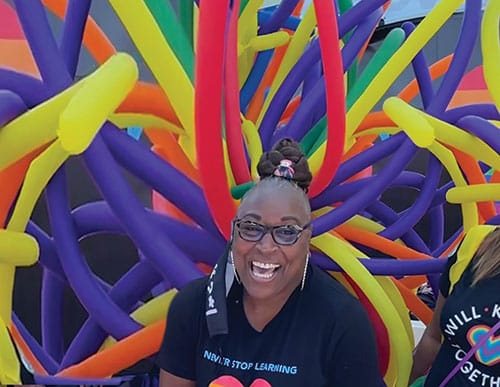
“A Magical Experience”: Free Community Ticket Program
The Free Community Ticket Program is among the most impactful of the Symphony’s initiatives, going on numbers alone: Since 2021, the Symphony has granted an average of 10,000 complimentary tickets each season to San Franciscans working in social services, health care, the arts, community nonprofits, and more.
The Symphony makes at least 40 free tickets available to each concert; in the 2024–25 season, tickets were distributed to more than 200 nonprofit organizations and their constituents. Grounded by the belief that world-class musical performances should be accessible to all, the Community Ticket Program provides many with their first Symphony experience.
That has meant the world to the community members of Five Keys Home Free, a trauma-informed reentry program that provides housing and support to formerly incarcerated women. Free tickets to the Symphony, which arrive about once a month, have proven a consistent source of joy for both staff and clients currently receiving support from the organization.
That’s no small feat for people who have experienced years of abuse and incarceration, says Sheila Von Driska, Five Keys Home Free’s development director.
“Many of these women have come out after decades of prison, and the fact that they can go see a symphony—in really good seats, most of the time!—that’s a magical experience,” she says.
For Tammy Johnson, Five Keys Home Free’s program director, a night out seeing live music with friends stands in stark contrast to much of her life: She was subjected to human trafficking at age 14 and spent 28 years in prison for being present when someone else committed a murder.
Johnson notes that Home Free provides women with a level of independence many transitional housing programs don’t. You can go to the grocery store—or to the symphony. In July 2024, she was one of a group of seven women who received tickets to John Legend’s program with the San Francisco Symphony. The group sent Von Driska a photo of them all dressed up, posing and smiling before the performance. “It was beautiful,” says Johnson.
Susan Bustamante, now a Home Free reentry coach and an advocate with the California Coalition of Women Prisoners, has been instrumental in shaping Home Free’s support programs. Her work with Home Free was featured as part of a month-long Symphony focus on the organization in print, online, and digital displays throughout Davies Symphony Hall.
“Walking into [Davies] and seeing my face looking back at me—that was amazing, kind of overwhelming,” says Bustamante. “But really, for me, it’s about hearing the excitement from the ladies, seeing the excitement on their faces. It’s very fulfilling.”
“This group of women is so deserving,” says Von Driska. “To go through what they’ve gone through, and then have not just freedom, but then exciting freedom? You can’t put a price on that. It’s really, really special, and we are so grateful to the Symphony for taking us under their wing.”
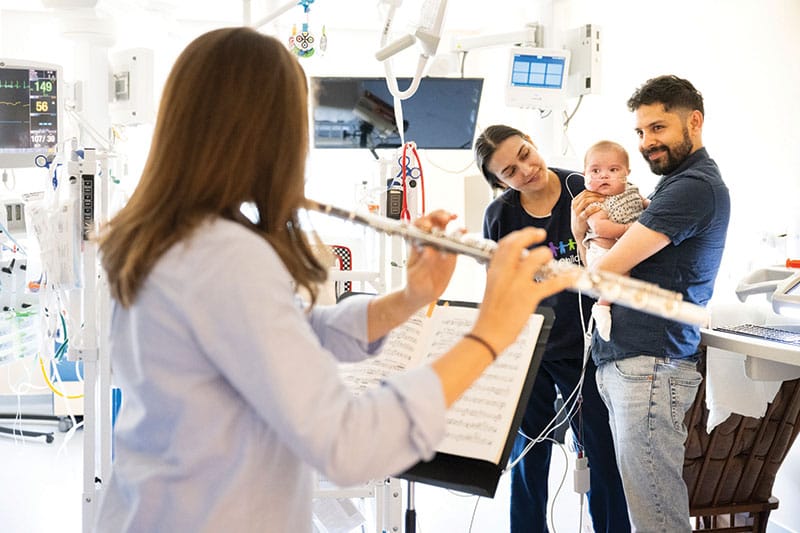
“Music Is Medicine”: Music in the Wards
Dan Smith, the San Francisco Symphony’s Associate Principal Bass, grew up expecting to become a physician. His mom was a nurse practitioner, and though he’d been admitted to Rice University in Houston on a music scholarship as a freshman, he declared premed, thinking it was much more practical to become a doctor.
Still, Smith leapt at the chance to volunteer playing music at a Houston hospital: “They had a little electric piano on wheels, and I would go around to different units and say ‘Hey, I was wondering if you’d like to hear a few songs and talk for a bit,’” he recalls. The interactions he had with patients were so powerful, he says, he was hooked almost instantly on music therapy: “I definitely believe music is medicine.”
Fifteen years later, Smith is a regular performer at Music in the Wards, the San Francisco Symphony’s partnership program with UCSF Benioff Children’s Hospital in San Francisco. He’s one of the many Symphony musicians—ranging from soloists to small ensembles, with instruments including the violin, bassoon, harp, and percussion—who have performed in the hospital since the monthly program began in December 2016. And while Smith relishes performing multiple concerts a week at Davies Symphony Hall, there’s nothing he looks forward to like the handful of times each year he gets to play intimate, 90-minute shows for patients and staff at the hospital.
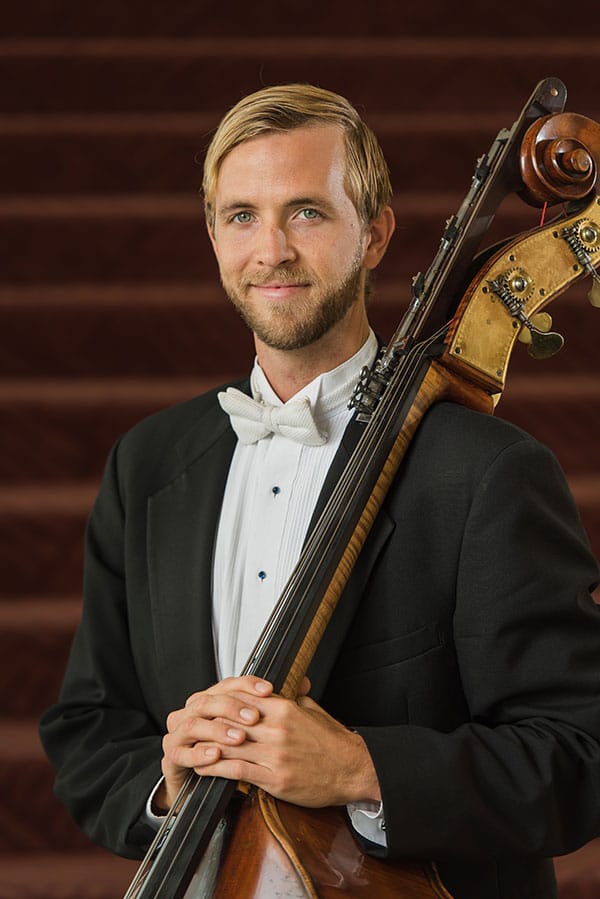
The program is “a gift” in a few ways, says Smith. “It’s nice to do something to show appreciation for the nurses, and hopefully bring a little peace to their day… it feels really personal when they tell you, ‘I needed this today,’ or ‘This week has been really tough.’”
Playing for young patients who are coping with serious or terminal illness has also felt meaningful. But ultimately, says Smith, it’s a gift for him. He signs up for every Music in the Wards opportunity he can. “You see kids who, all they can do is give you a thumbs up, and it’s just the biggest wake-up call and perspective shift,” he says. “You’ve got to make sure you wake up every day grateful for whatever you have.”
To Brianna Negrete, a music therapist at UCSF Benioff, the impact of music therapy can’t be overstated. Negrete has been involved with the hospital’s partnership with the Symphony since it began and has seen countless moving interactions between patients and Symphony musicians during Music in the Wards performances.
“We see patients smile and dance who we haven’t seen do that before. We’ve had patients be motivated to get out of their room and walk for the first time to come see the musician who’s playing, when we’ve been trying for weeks [to help them walk], and that’s really, really powerful,” she says. “We’ve had patients who were screaming in pain just completely stop once they hear the music.”
It’s not just about lifting spirits, she says. There are measurable, physiological benefits to music. Medical professionals saw proof of this during the pandemic, especially. Music in the Wards went virtual during that time, providing much-needed beauty and comfort to both heroic first responders and sick patients during a time of deep anxiety and grief.
But the in-person concerts are magical on a different level, Negrete says, reeling off a half-dozen memorable experiences with Symphony musicians. Once, a Symphony harpist was performing in the hospital’s school room, where children who are spending months or years hospitalized take classes. UCSF Benioff medical staff heard beeping and realized that one young patient was enjoying the music so much it had lowered his heart rate. “His heart rate was dropping to a nice, relaxed state, so much that the machine wanted to make sure he was OK,” she says. “He was smiling and listening and totally fine.”
Negrete would also like to dispel the misconception that working with sick children is depressing. “We look at it from a lens of bringing these patients and families so much joy,” she says. “There’s a lot of beauty and happiness here, and music is a big part of that. The Symphony makes that impact.”
And that impact continues to grow. This past spring, Symphony musicians performed for the first time at an adult hospital, thanks to a new collaboration with Art for Recovery at UCSF’s Hellen Diller Family Comprehensive Cancer Center. In the season ahead, musicians will bring live music to even more San Francisco Public Library branches and other neighborhood spaces, while the Free Community Ticket Program continues to welcome new audiences to the concert hall each week. In every corner of the city, these moments of connection help weave the Symphony more deeply into the vibrant cultural fabric of San Francisco.
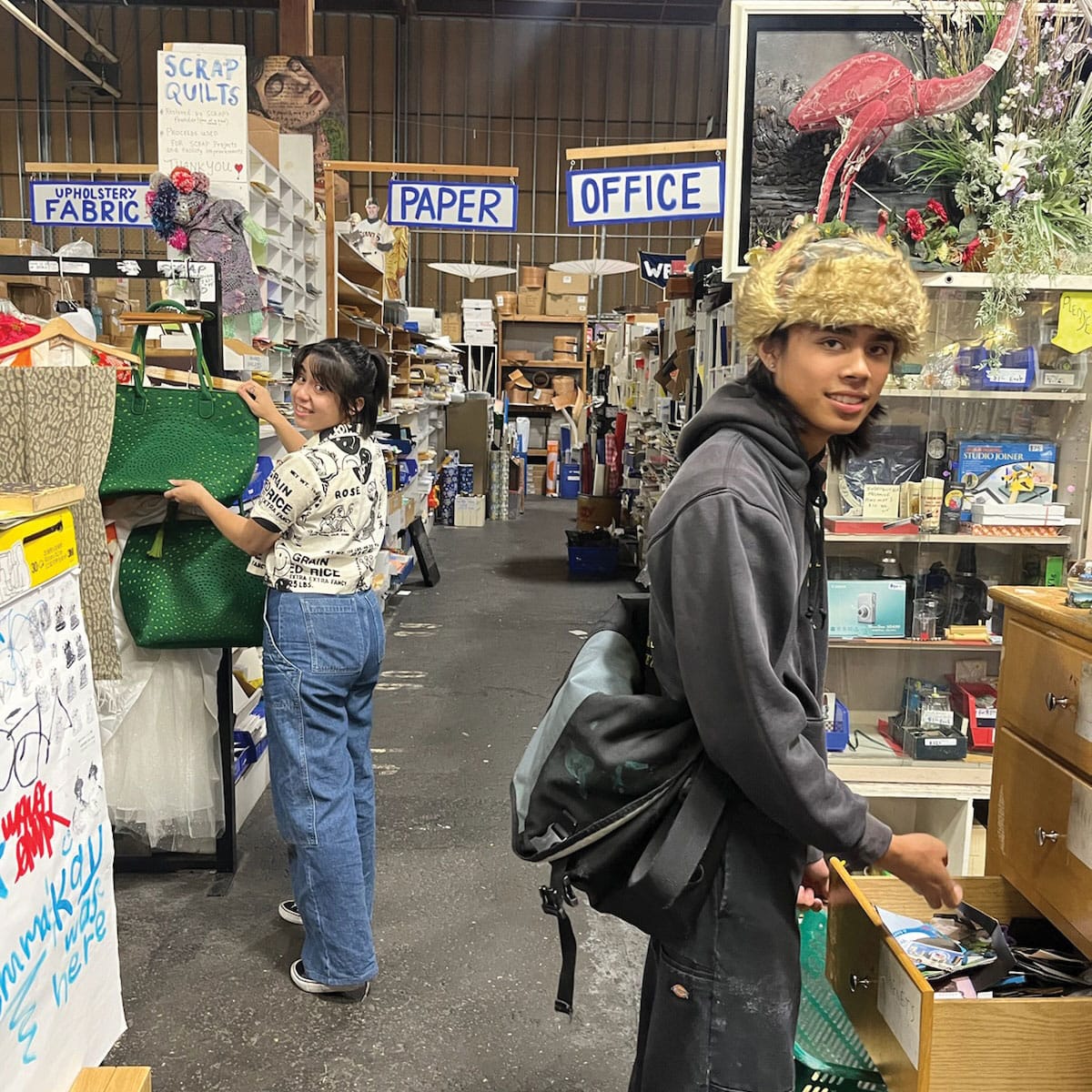
Community Connections
Bringing Music to All San Francisco
The All San Francisco Concert, presented in partnership with the San Francisco Arts Commission, is a dedicated performance for Bay Area nonprofit, social services, and community organizations, in recognition and gratitude for the work these groups do for the citizens of our city. Created in 1980 by veteran philanthropist and San Francisco Symphony Life Governor Ellen Magnin Newman and led by an advisory committee of local nonprofit and community leaders, the concert is a pillar of the Symphony’s community programs.
The Ellen Magnin Newman Award is presented annually to a Bay Area community-based organization that strengthens our region’s cultural fabric and serves families and individuals to create a more just and equitable society for everyone who lives here.
This year, the All San Francisco Committee is proud to honor SCRAP, a nonprofit founded in 1976 and based in San Francisco’s Bayview neighborhood. SCRAP’s mission is to inspire creativity and environmental stewardship in children and adults through promoting the creative reuse of materials that traditionally have been discarded as waste. Learn more at scrap-sf.org.
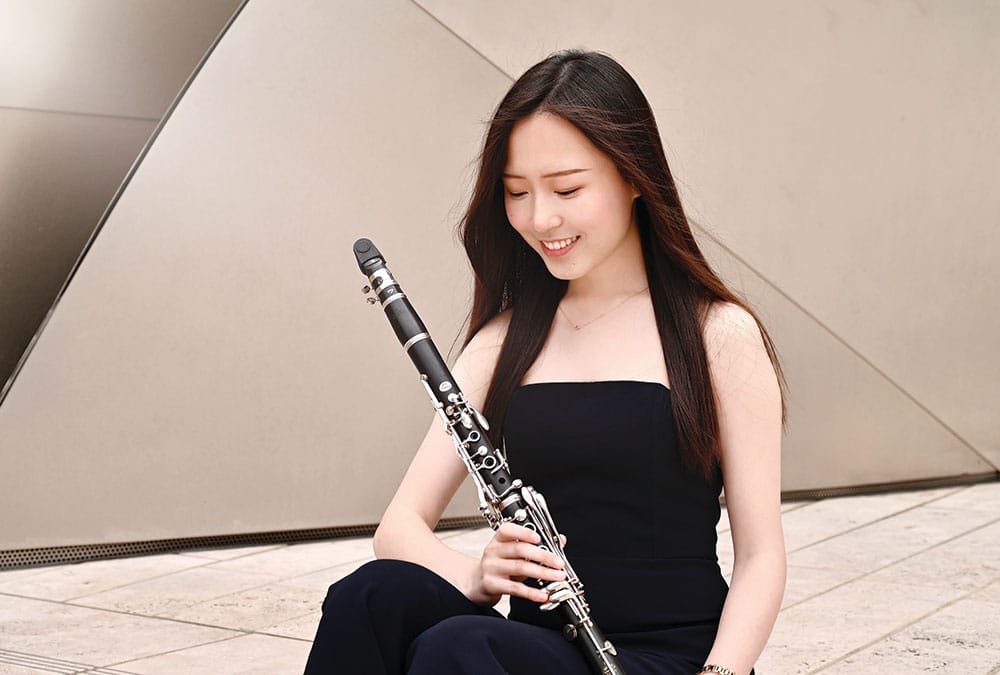
Meet the Musicians
Yuhsin Galaxy Su • Clarinet
Yuhsin Galaxy Su joined the San Francisco Symphony as Second Clarinet at the beginning of the 2024–25 season. She completed a master’s degree at the Colburn School and studied at the Curtis Institute of Music.
What was the first concert you played with the San Francisco Symphony?
My first concert with the San Francisco Symphony was Music from Studio Ghibli with Joe Hisaishi. Growing up, I listened to his music and watched Studio Ghibli films, so performing with him was an incredibly special and surreal experience.
How did you begin playing your instrument?
In Taiwan, music schools require students to have both a primary and a secondary instrument. I initially majored in piano, with clarinet as my secondary instrument. I’ve always loved both, but when I was 14, I made the switch to major in clarinet and moved to the United States to continue my studies. But even now, I continue to play and perform on the piano regularly.
Did you have some especially influential teachers or mentors?
I studied with Yehuda Gilad at the Colburn School for my master’s degree, and he has been one of the most profoundly intelligent and caring mentors I’ve had. His guidance shaped not only my playing but also my approach to music and life. Without a doubt, he transformed my perspective in the most incredible way.
What kind of clarinet do you play?
I recently bought a Buffet Tosca clarinet, and I love how it feels to play. It’s incredibly responsive, with a warm, resonant tone that projects brilliantly. It’s an instrument that truly inspires me every time I play it.
Do you have other musical activities outside the Symphony?
I play a lot of piano and accompany at the San Francisco Conservatory of Music, which allows me to stay engaged in the broader musical community. This coming October, I’ll be performing Copland’s Clarinet Concerto with the Reno Chamber Orchestra. I’m really looking forward to it!
Can you tell us a little about your life outside the Symphony?
Running is a big part of my daily routine—I go for a run first thing in the morning. I also love to cook and bake, often creating my own recipes for dishes I enjoy. On a nice sunny day, I love to take a walk to Arsicault Bakery for my favorite almond croissants!
What’s your concert day routine?
I start the day with a morning run, followed by coffee and peanut butter toast—my go-to breakfast. After warming up on clarinet, I practice piano and take a walk in a nearby park. I like to cook dinner at home before heading to the concert. Afterward, I like to treat myself to a small glass of wine and watch some Friends before heading to bed.
Why is an orchestra an important cultural pillar in a city like San Francisco?
The San Francisco Symphony is a vital part of the city’s cultural fabric. It brings world-class music to the community, fosters creativity, provides music education, and supports the local economy. Most importantly, it keeps classical music alive in innovative and exciting ways, ensuring its relevance for generations to come.
Print Edition
